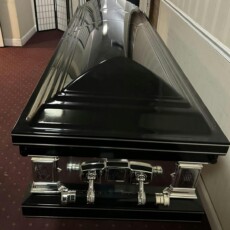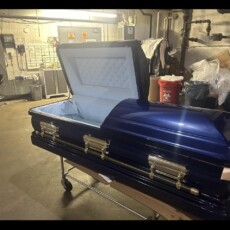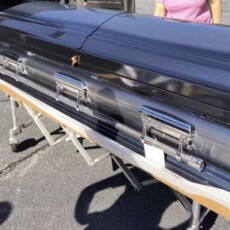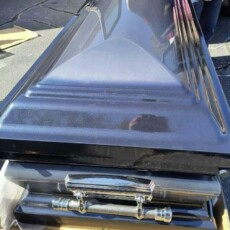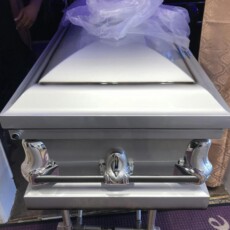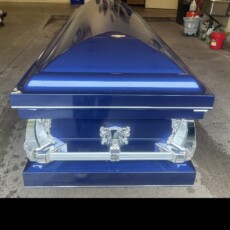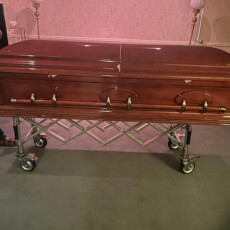Coffin vs. Casket
Unfortunately, it’s only a matter of time until we all have to face death. Even if some people are interested in non-traditional burial methods, the coffin is not going away any time soon. It doesn’t matter if it’s a degradable coffin or a high-dollar model we’re talking about, coffins aren’t going to disappear from our world shortly. Let’s not forget that they’re also popular props for Halloween parties and decorations. We have many different styles at casketemporium.com
What’s the briefest definition of coffins?
The coffin is a funerary container and has been used for centuries now, even if the forms were various. No matter the period or the civilization when it was utilized, the coffin has always accomplished the same purpose. It serves as a container for accommodating the body of the deceased.
Truth be told, the variety of coffins when it comes to shapes, sizes, and materials is overwhelming, especially when comparing from different religions, cultures, or counties. Regardless of the variety or the difference, the central concept remains the same.
What’s the origin of the word “coffin”?
In Greek, we notice the word “kophinos,” which literarily means “basket.” Many consider that the name is actually coming from the French word “coffin”.as we all know, in North America, theirs is a difference between coffin and casket, but you need to keep reading for the details.
Coming back to the explanation, the French word “cofin” refers to a small basket. In Middle English, the terms may also apply to a chest, a casket, and sometimes it can define a pie.
In 1700, the coffin was mainly hexagonal, presenting six sides. It was tapered at the shoulders, but also at the feet. The top half of a coffin used to be made for perfect fitting of the deceased’s width of shoulders. The anthropometric shape relates to the measurements and shape of the human body, which was quite challenging for some manufacturers. View our options at casketemporium.com
What does history teach us about coffins?
It seems that coffins were a big thing even during the ancient civilization. Taking a closer look at the old coffins tells historians a lot of things about the afterlife, the death, and the funeral services for a specific time.
Why is Tutankhamen’s Golden Coffin important?
You don’t need to be a professional historian to know a bit about Tutankhamen’s gold coffin. It’s the most significant evidence that coffins were famous even in Ancient Egypt when the human bodies of talented people would be mummified through a long and tricky process.
As he was emperor at the time, Tutankhamen’s body is one of the many mummified. Many of us have seen pictures of the golden coffin with the life-size image on the lid.
Obviously, the coffins would be made of gold for some historical figures, such as Tutankhamen. Alexander the Great, Cyrus the Great, and even Buddha were buried in golden coffins.
As a matter of fact, the ancient Egyptians utilized the golden coffins for entombing the Pharaohs. Nowadays, we can admire the coffins in museums, along with various artifacts that were also discovered in the tombs
Which materials were commonly used for coffins?
To this date, wood remains the no.1 choice when it comes to materials for coffins. Even if a fiberglass, cast iron, steel, and even wool are used for coffins, wood still is the most popular option.
The interest in saving nature’s resources isn’t new. For instance, in 1784, the Roman Emperor Joseph II tried to use reusable coffins for protecting some of the wood. Back then, the coffins were made with a trap door that was open at the bottom. Therefore, it became possible to drop the body straight into the grave. Afterward, the coffin was pulled back up and kept until the “next time.” even though the method was mended to be useful, it didn’t last for long. The relatives of the deceased would be frustrated with the technique, which seems disrespectful to the dead. The life of the method was rather short, and it soon disappeared.
Why is the 19th century significant for the history of coffins?
In all fairness, some of the most exciting and beautiful coffins were made of cast-iron. It was 1850 when cast iron coffins would hit the market, but they didn’t quite become popular because of their high price.
To this day, cast-iron coffins or coffins made of other metals are a popular option among people with generous budgets. They secure the dead body against rubber and somewhat preserve it for a longer time than the wood coffins.
Don’t forget that cast-iron coffins are heavyweight, which makes thieves think twice before trying to steal it. It goes without saying that the spending for funeral services runs higher, as there’s a lot more effort in carrying the larger box made of cast-iron.
Do coffins come with decorations?
Even some people like to go with simple coffins without decorations, and some want to customize coffins and use various types of decoration.
The styles and kinds of adornment are various, though, going from an original and unstained wooden box to one that is adorned with intricate carvings, jewels, and many more. Even the burial ground can be decorated, going from a simple grave to a decorated mausoleum.
What is safety, coffin?
It was the 1700 and the 1800s when people started to worry about the risk of being buried alive. They were also afraid of waking up from the dead. In all fairness, there were some incidents where one considered to be dead would wake up all of a sudden.
A weird evidence
For instance, in the 17th century, there’s a document in England about a woman (Alice Blunden) who was buried alive. According to the story, she seemed to be dead after ingesting a significant amount of poppy tea. The doctors didn’t know much back then, and one holds a mirror to her nose and mouth, for declaring the death. For those of you who don’t know, tea made from unwashed and dried seed pods may contain codeine and morphine, which are well-known sedatives.
Needless to say, the family planned the burial and proceeded with the funeral. Two days after being buried, some children heard weird noises coming out of the grave. It seems that Blunden was alive and wasn’t revealed until one day after. However, she was nearly dead and was found dead eventually, after struggling to escape the grave one last time.
But that’s not the only weird event stated in the documents. There are also stories about coffin lids found with scratches after moving the body to another site. People thought that the “deceased” would wake up under the ground, desperately trying to escape before suffocating to death.
To bring some sort of relief, new coffins would come with a bell. Hence, should one suddenly wake up in a coffin, he/she could quickly ring the bell. However, he/she would have to be heard by someone to be rescued.
There was also the practice in some cultures where the end of a string would be tied to the deceased’s finger, whereas the other end would be tied to a bell. The bell was placed right above the grave. Should the person “come back from the dead,” he/she would move the finger, ringing the bell.
What happens to coffins in modern days?
Coffins have traveled a lot through the ages. With technology bringing changes in so many areas, it makes sense that coffins don’t make an exception either. We now see coffins with windows that are electrically powered.
More often than not, modern people like to use stainless steel coffins. It’s because stainless steel is more durable and more dependable in the long run than wood. Regardless, the most popular material for coffins remains wood, which is a significant difference between coffins and caskets (mostly made of stainless steel and other stuff).
When did caskets come along?
With hexagonal coffins being the no.1 choice in North American Colonies throughout the 17th and 19th centuries, one can only wonder: how come caskets hit the market and eventually took it over?
The theories are plenty. Even if the rectangular coffins would become more and more prevalent before the American Civil War (1861-1865), it was the war that changed the market for good. Back then, coffins were typically made of wood. Unlike in Britain, coffin manufacturing in America was still in its beginnings, and the Civil War also caused an essential change in terms of American funeral services.
The violence and the increased number of deaths caused the “beautification of death” in America during the war. It makes perfect sense now that people would try to accentuate the distance between the living and the ugliness of death. The hexagonal coffins played an essential role throughout the distancing process. The early American caskets were still made with six sides, even though they were bigger. Moreover, they always weren’t tapered at the bottom.
The term “casket” refers to a box for treasures/jewelry. It was in the 18th and 19th centuries that funeral directors and funeral services began to gain popularity. The caskets were used for viewing and later for burial, making the mourning process more comfortable to handle by the family. A deceased laying in the casket rather than in a cheap coffin would look like laying in the bed. Let’s not forget the embalming process that would make the dead appear like sleeping.
Many render the term “casket” to be kinder, and viewing the body in a container that wasn’t shaped like the body would also be less offensive. In 1863, Nathanial Hawthorne believed that the shifting from the coffin to the casket would protect the people from the unpleasantness of death (to some extent).
For some, the coffin was too blunt, too basic, and lacking fining. The shifting from the name “coffin” to “casket” is natural, as a casket would send your mind to a vessel accommodating some of your precious goods. We all know that’s a euphemism, but it perfectly depicts and explains why the term “coffin” was less and less used, as the word “casket” would gain popularity.
But that’s not the only reason for which caskets would take the place of coffins. The post-revolutionary period with British people mourning in public slowly faded, but only to become something typical in America. People in America were sustained to buy local fabric for the mourning ceremonies and not so much the imported materials. Rather than imitate rituals from across the sea, Americans would create their own connection with the dead.
Needless to say, the changes in traditions also impacted the coffin. In less than 150 years, the coffin would be abandoned in favor of a casket offered for sale by a funeral home. The latter was an improvement of the coffin, a polished and more sophisticated model that slowly shifted away from the deep-rooted definition.
How to explain the difference between “coffin” and “casket” in a nutshell?
All in all, the difference comes from the shape, even if many are using the terms interchangeably. The coffin presents six sides, and it’s hexagonal, whereas the casket only shows four sides, being defined as rectangular.
There are slightly more similarities than differences between the two. Both coffins and caskets may feature handles, and the materials used for manufacturing are practically the same. Even if the wood is the most affordable choice for both caskets and coffins, it’s also the no.1 option for coffins. Over the years, steel has become the most common choice for caskets.
Do people around the world use “casket” or “coffin”?
Let’s remind you that the term “coffin” was the first term used until the mid to late 19th century. We will always have to thank the funeral directors for spreading the term “casket” to make the funeral industry and terminology more pleasant to the people. They were only trying to help the people speak about the funeral, and everything related more comfortably and less painfully. The association of the funerary container with the jewelry box eases out the conversation when discussing the details of a funeral ceremony with the family of the deceased.
Truth be told, not many people are aware today about the difference between the casket and the coffin. Most people use the term interchangeably in the United States.
What matters nowadays is that one can be buried in the ground without a casket or a coffin. As it’s not possible in all cemeteries, you should check where a natural burial is available.
View our many options at CasketEmporium.com


